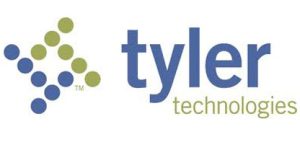Federal employees are less likely to experience sexual harassment than they were 20 years ago, according to the U.S. Merit Systems Protection Board, but it still happens. In fact, Willisa Donald, former Director of the Equity, Diversity, and Inclusion Office at the Defense Threat Reduction Agency (DTRA), said recently that the number of cases filed alleging all types of harassment has grown significantly since the pandemic.
She attributes the spike to three things:
- Misunderstandings. When all work was remote, there was more potential for information to be misconstrued. “Individuals were unable to see one another’s facial expressions, hear the tone, or see body language, so speculation and different perspectives also caused some misunderstandings,” Donald said.
- Stress. Tensions ran high during the health crisis. “People were not always able to be their authentic selves,” she said.
- Readjustments. Now in the post-pandemic environment, employees are back to navigating rush hours, kids’ schedules and other challenges. “Some of this has impacted relationships in the workplace,” Donald said.
One way DTRA addresses harassment charges is through its Anti-Harassment Program (AHP). It provides managers with policies and procedures for addressing employee allegations and is separate from the equal employment opportunity (EEO) processes required by the U.S. Equal Employment Opportunity Commission. Employees can use both if the harassment is based on discrimination or retaliation.
The agency has an AHP Manager that includes a toolkit for managers and a training course for employees and managers. “The training and toolkit…allow us to be proactive in addressing harassment,” Donald said.
Currently, DTRA tracks harassment claims by a spreadsheet, which makes it difficult when the Defense Department or other agencies ask for statistics on cases. “We have them, but you’re basically hand-jamming it and trying to make sure that everything is accurate,” Donald said. “The biggest issue right now is just making sure we’re capturing the information and that it’s as accurate and timely as possible.”
Before she left DTRA, she was looking into implementing case management software, which would simplify tracking. “We can do that via paper, but I think it’s great when you can print out a report automatically without having to manually key in information,” she said. “You can even do impromptu reports, so it’s great to be able to have that mechanism.”
The software would also help DTRA track trends in harassment charges, such as recurring complaints or parties involved. “We want to know areas in which we’re trending up because maybe that means that there’s an opportunity for us to provide additional education and awareness to the workforce,” Donald said.
Another benefit of digitization: It ensures that all relevant information remains in a centralized place when staff changes occur.
“It’s important internally in our office for us to have the resources that we need,” Donald said. “It helps us to be able to track our EEO cases, our harassment cases, regardless of who is on the team.”





Leave a Reply
You must be logged in to post a comment.